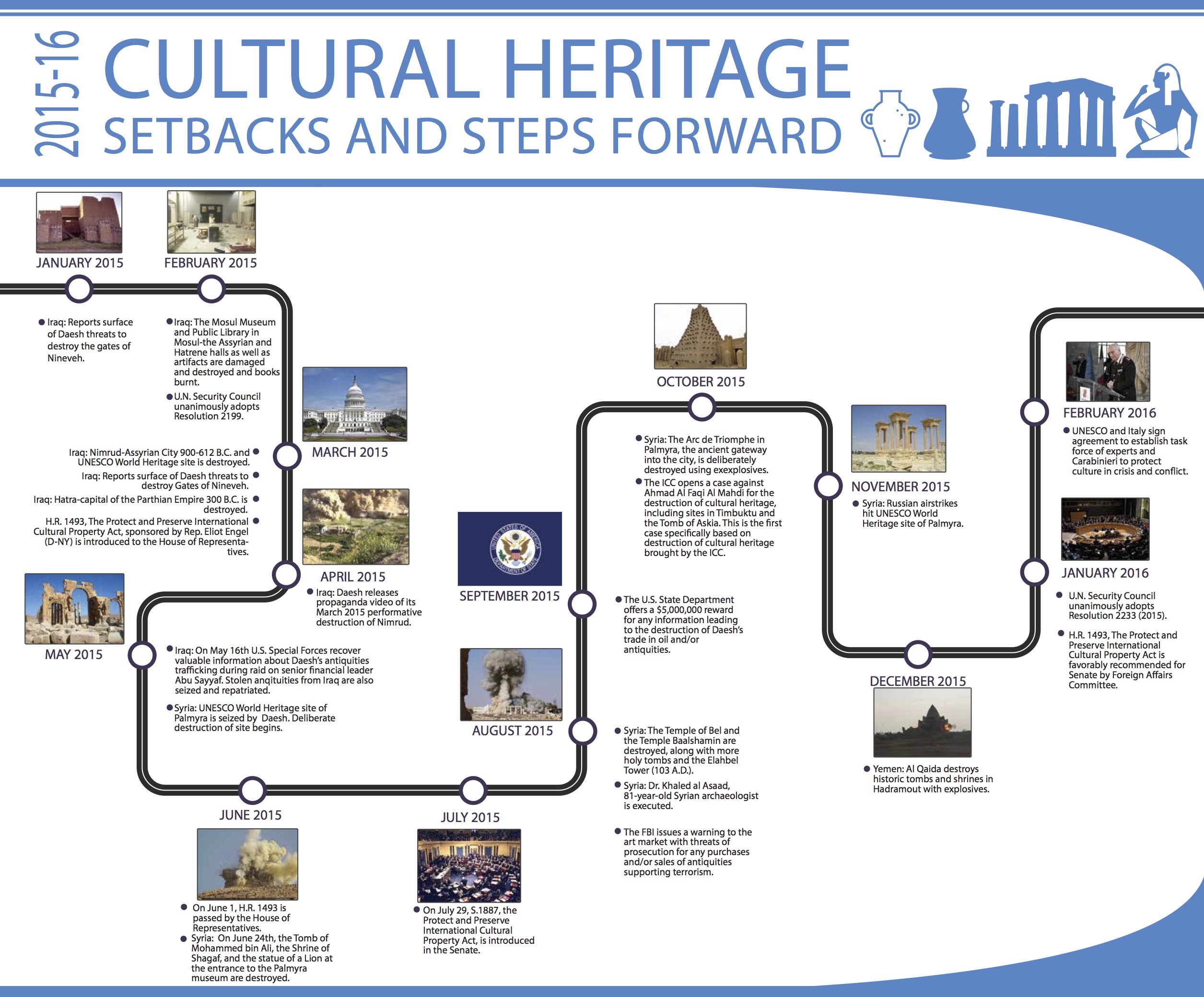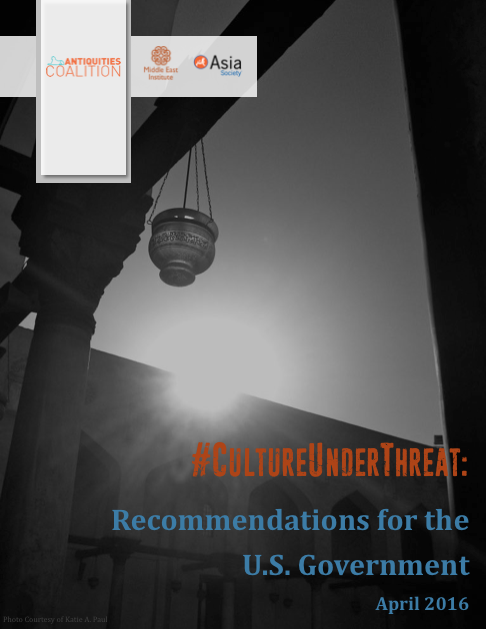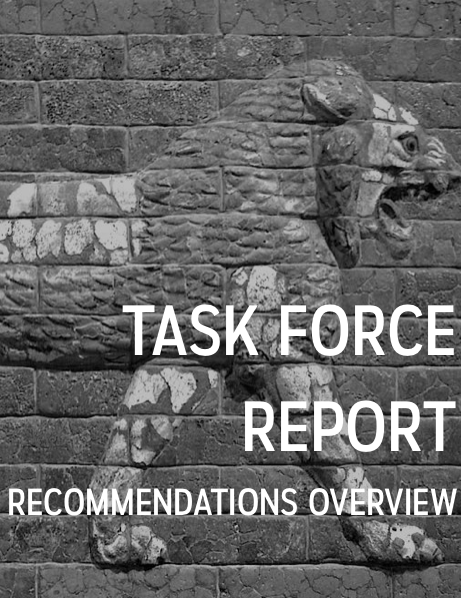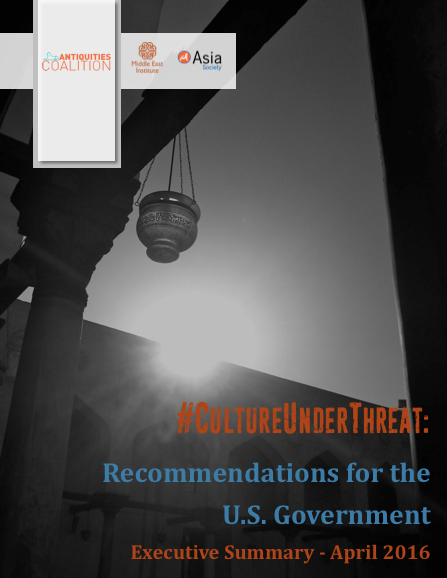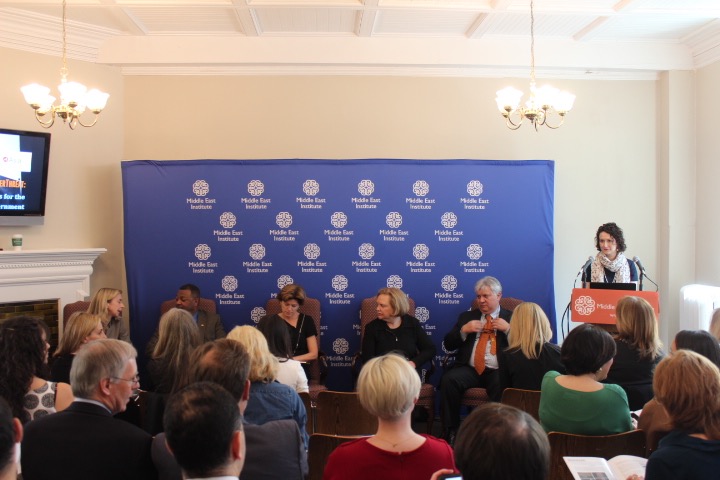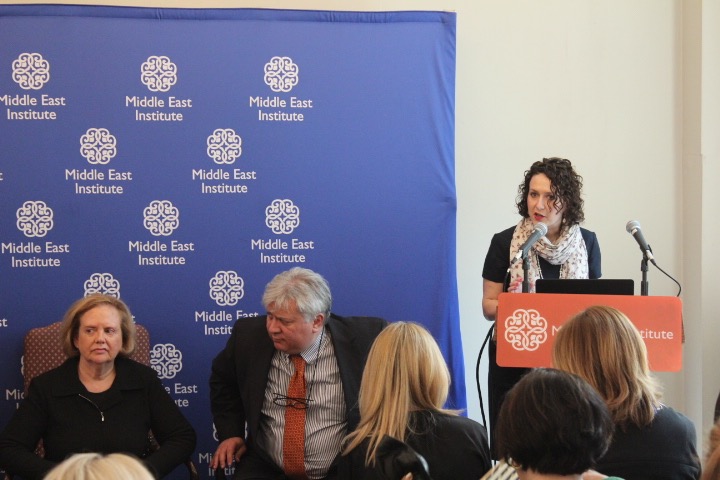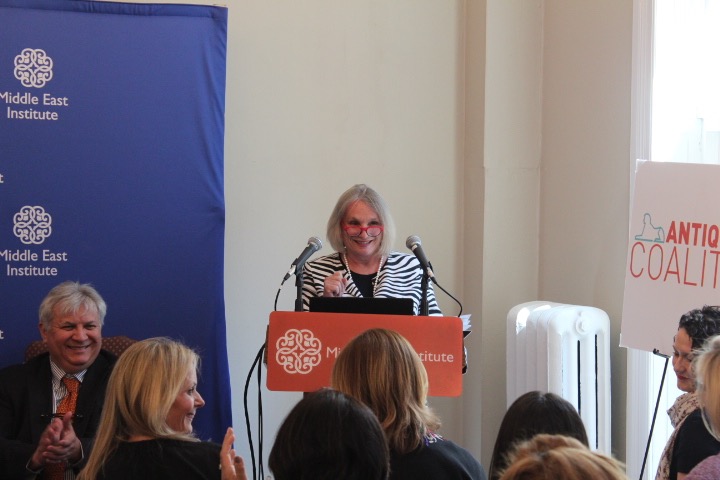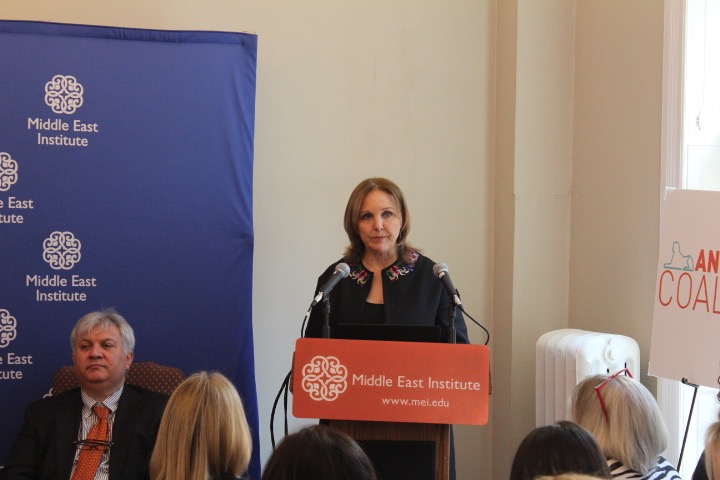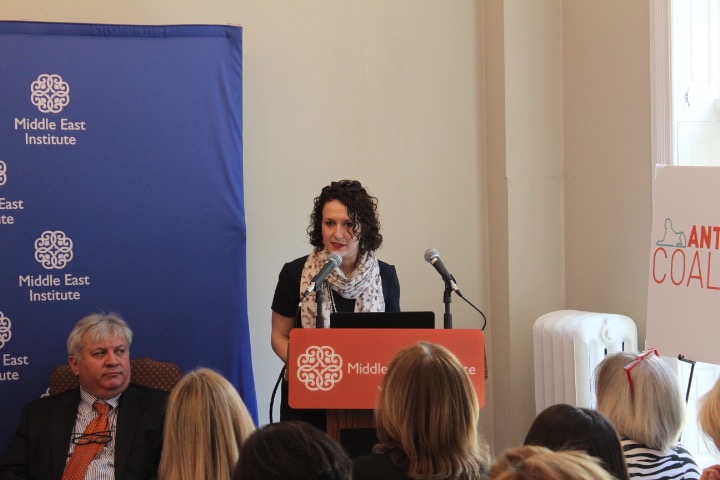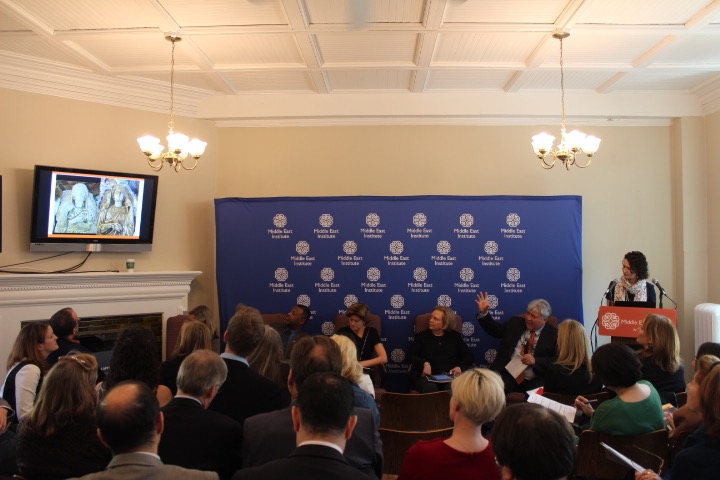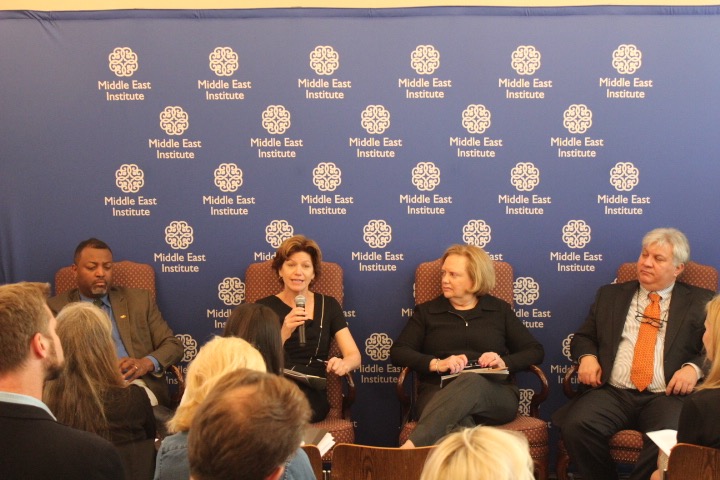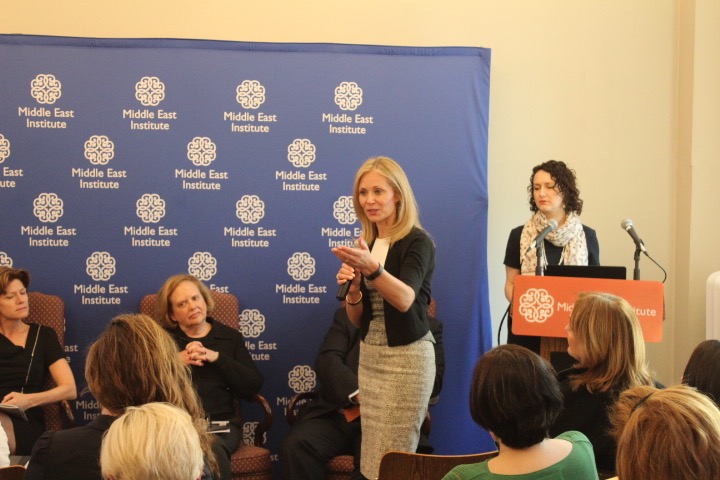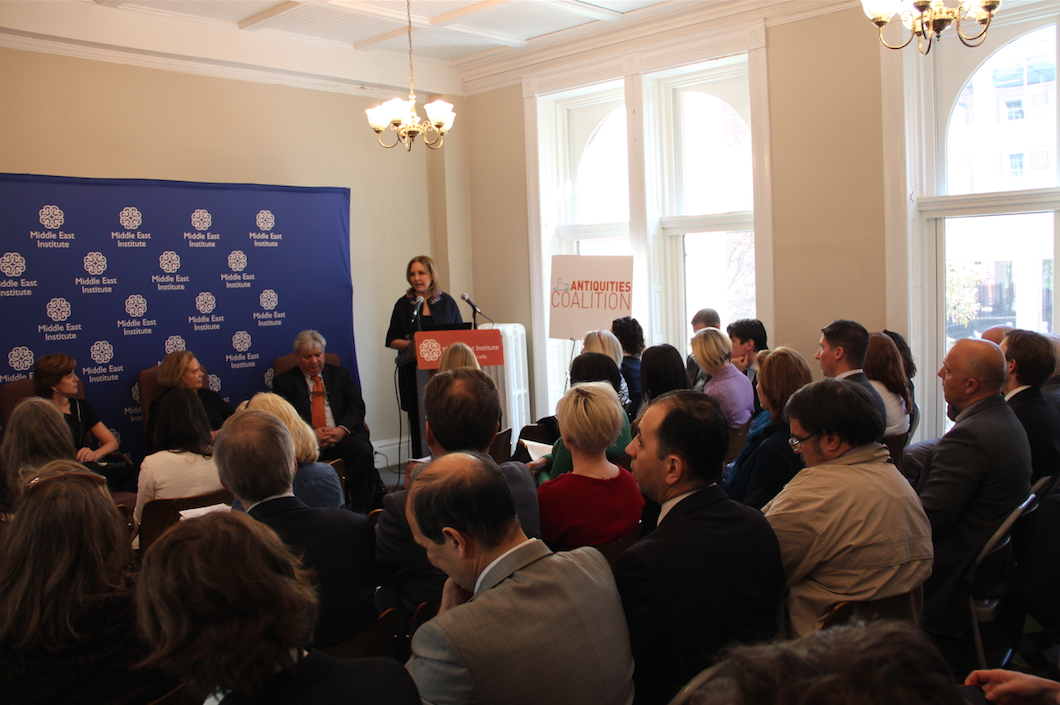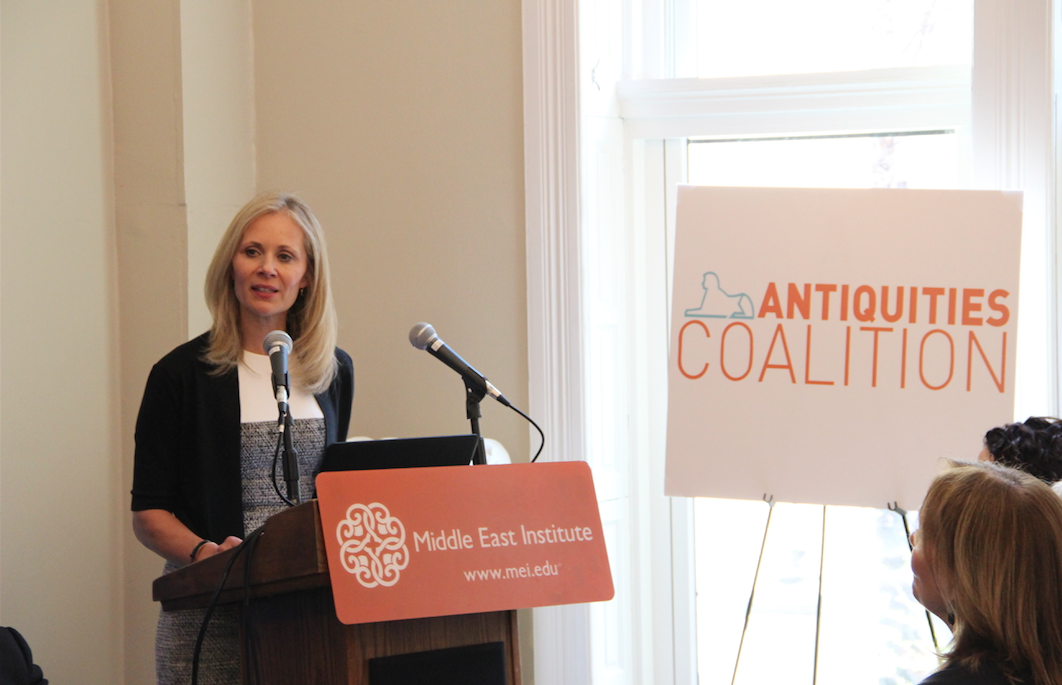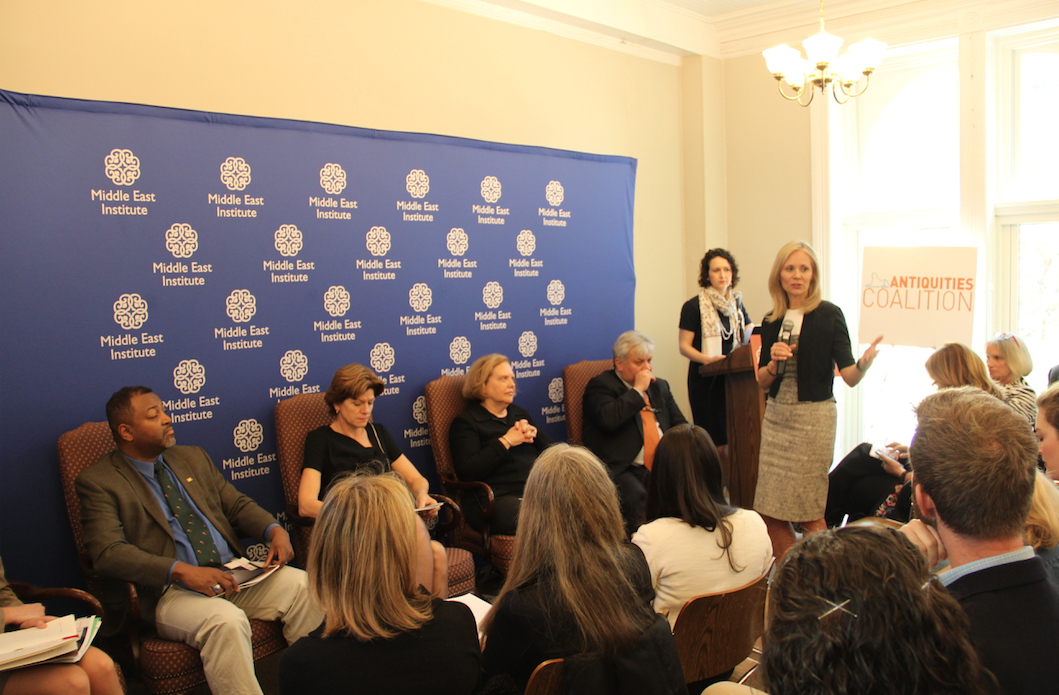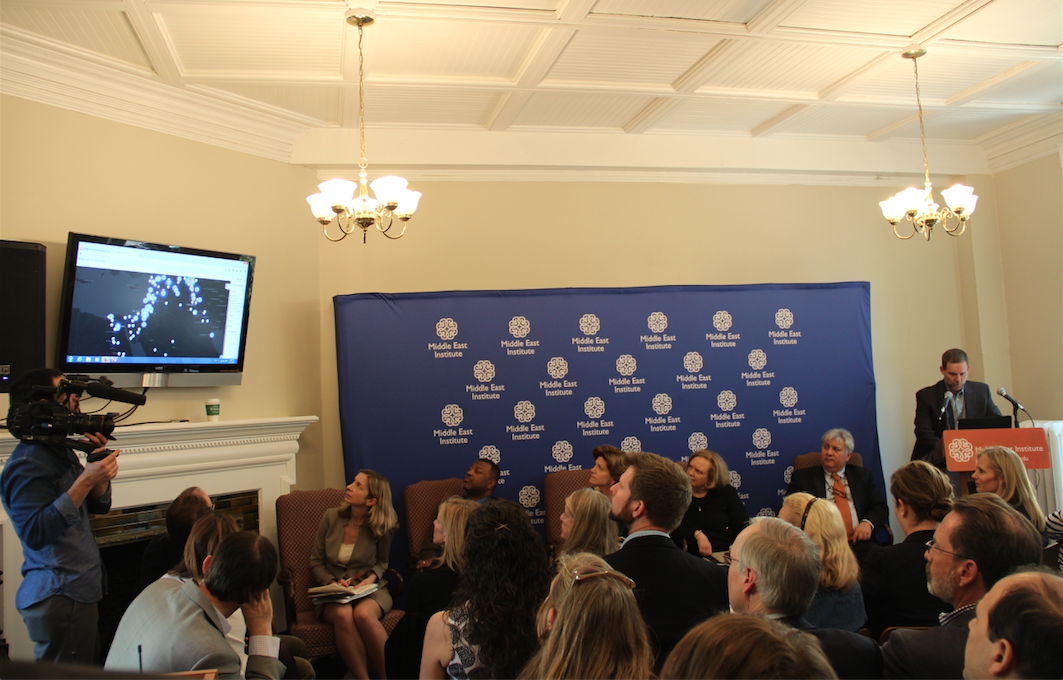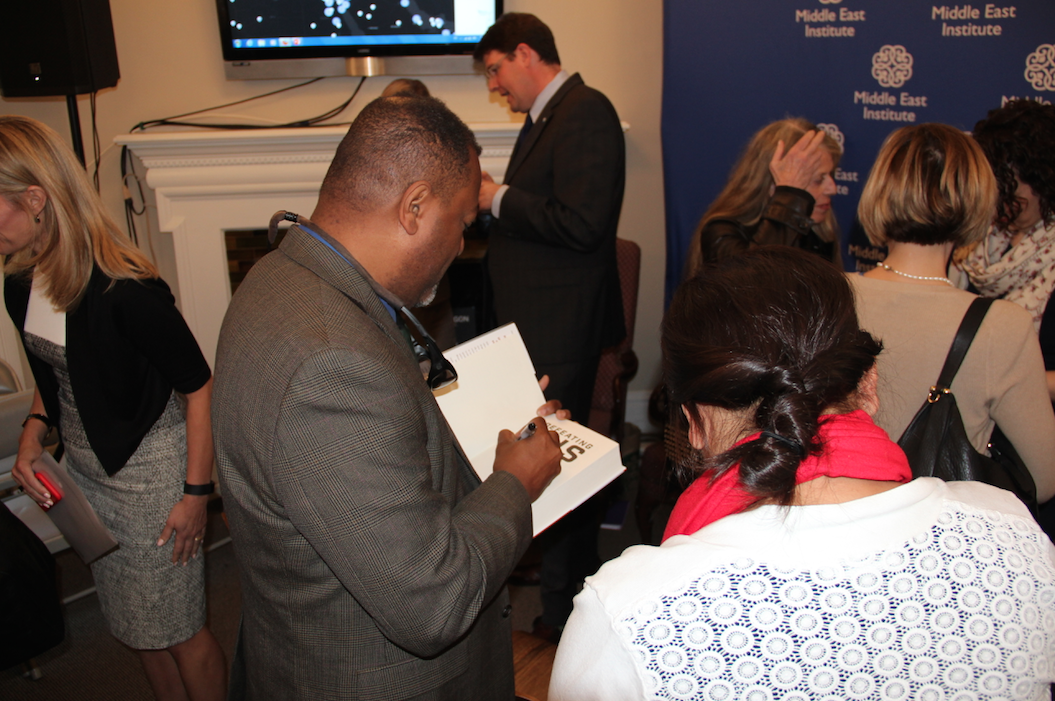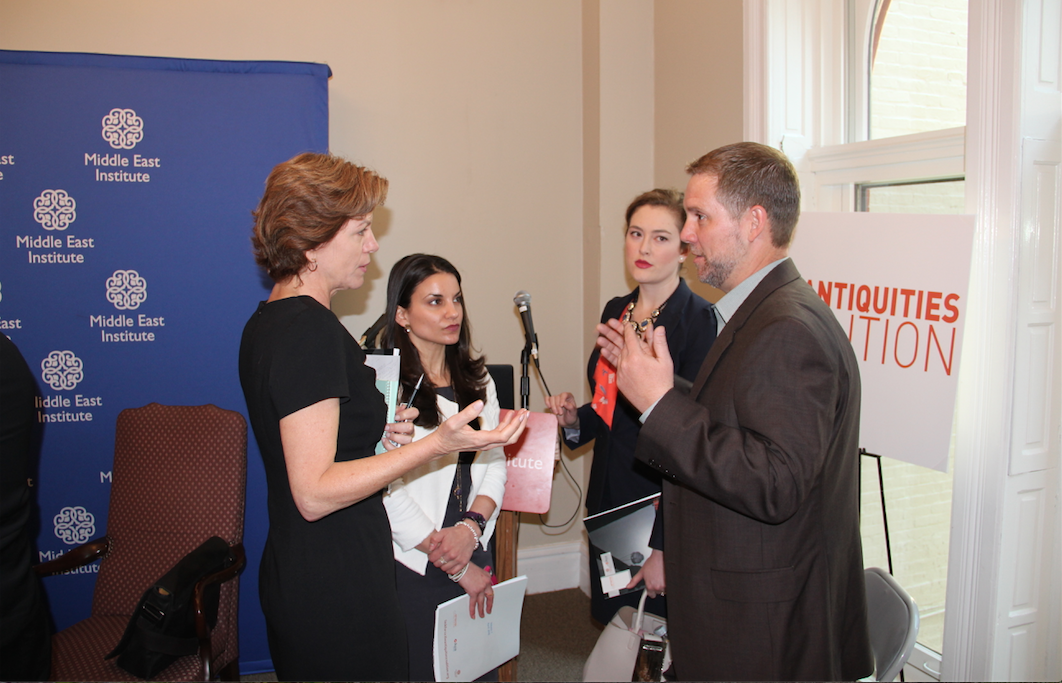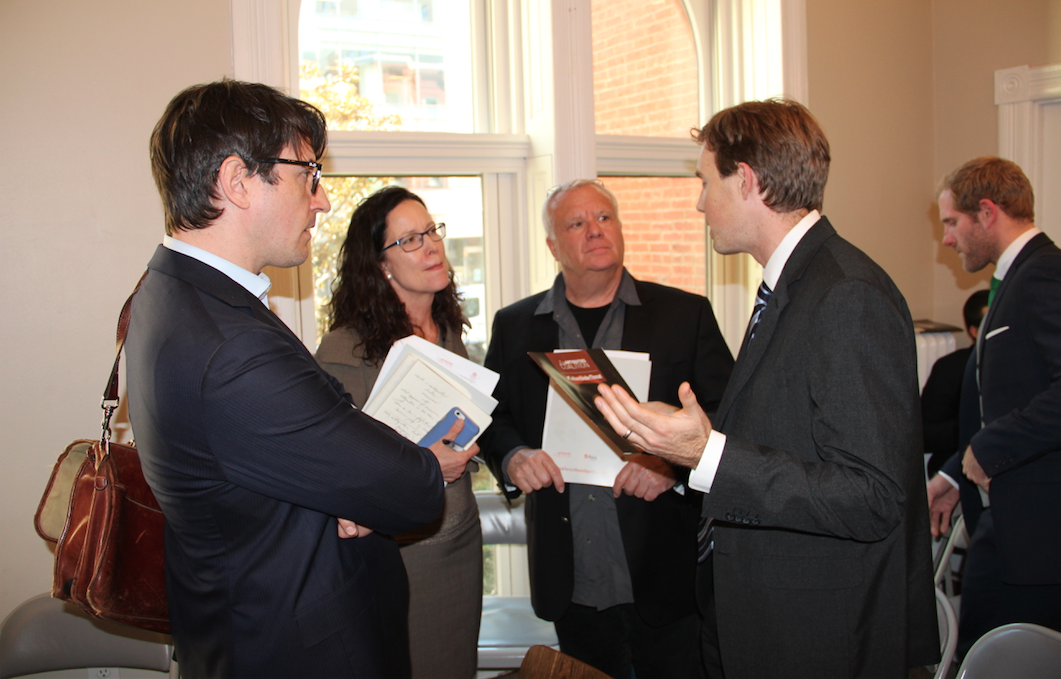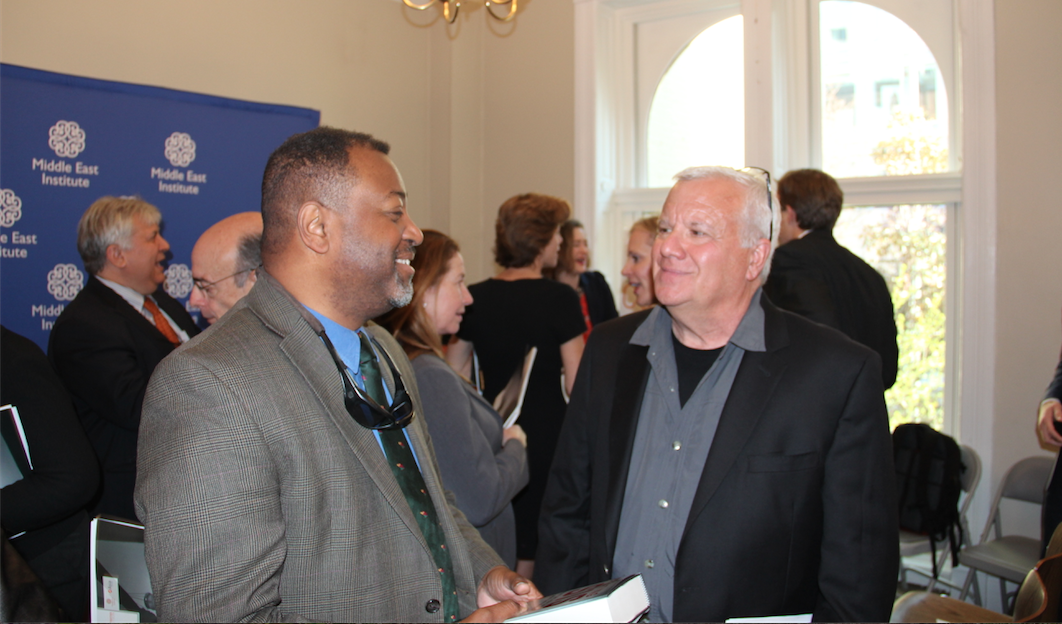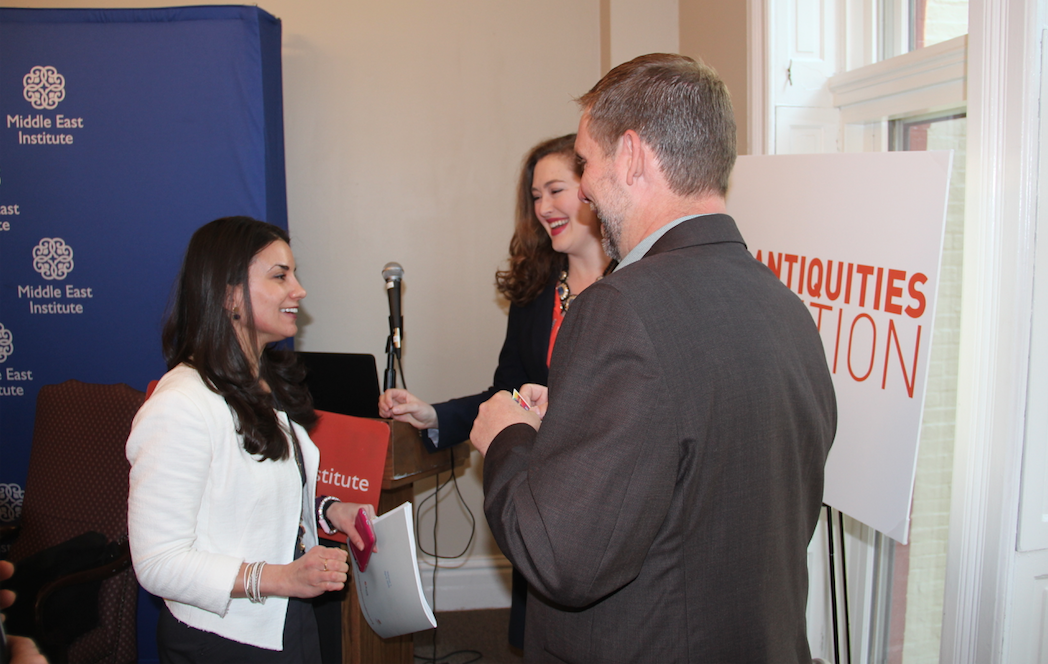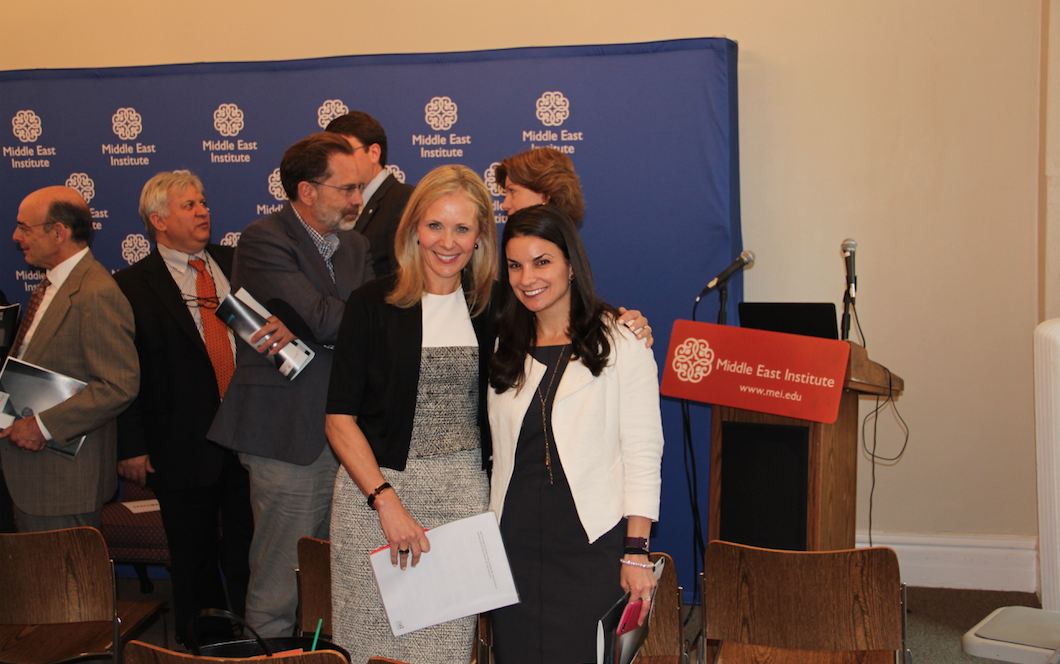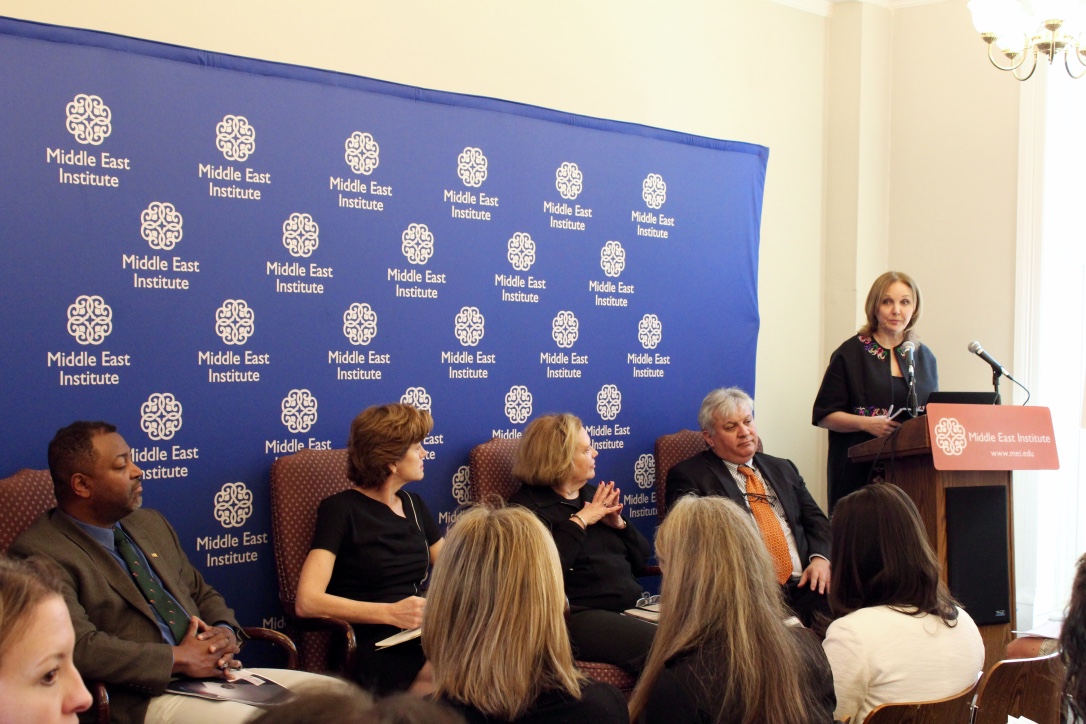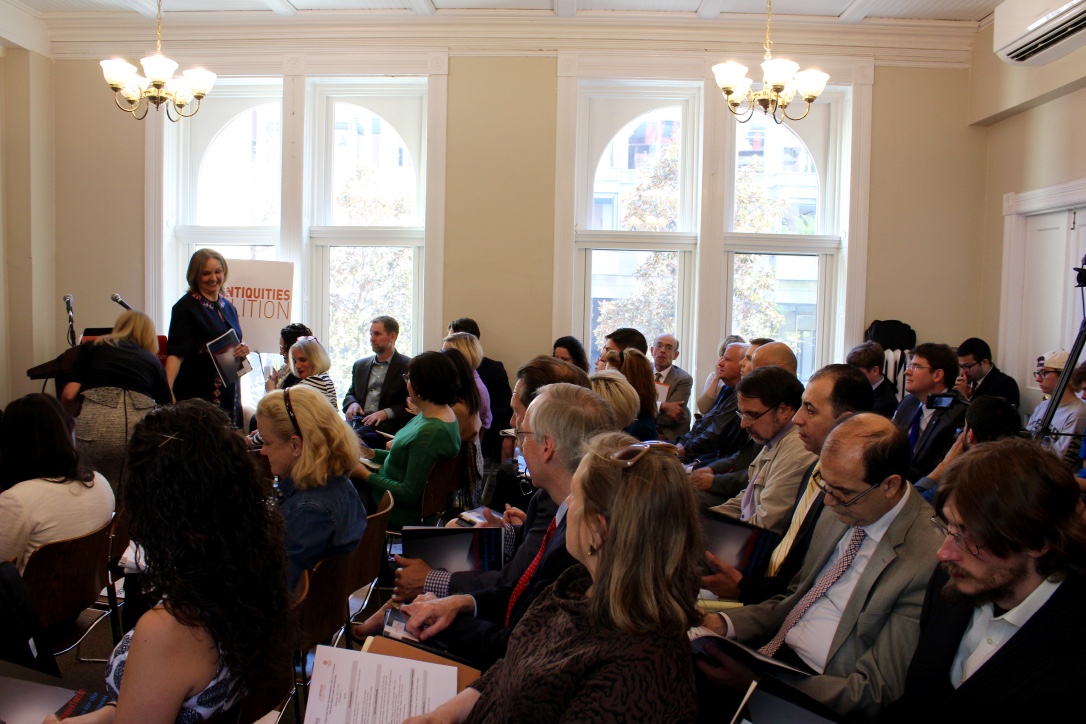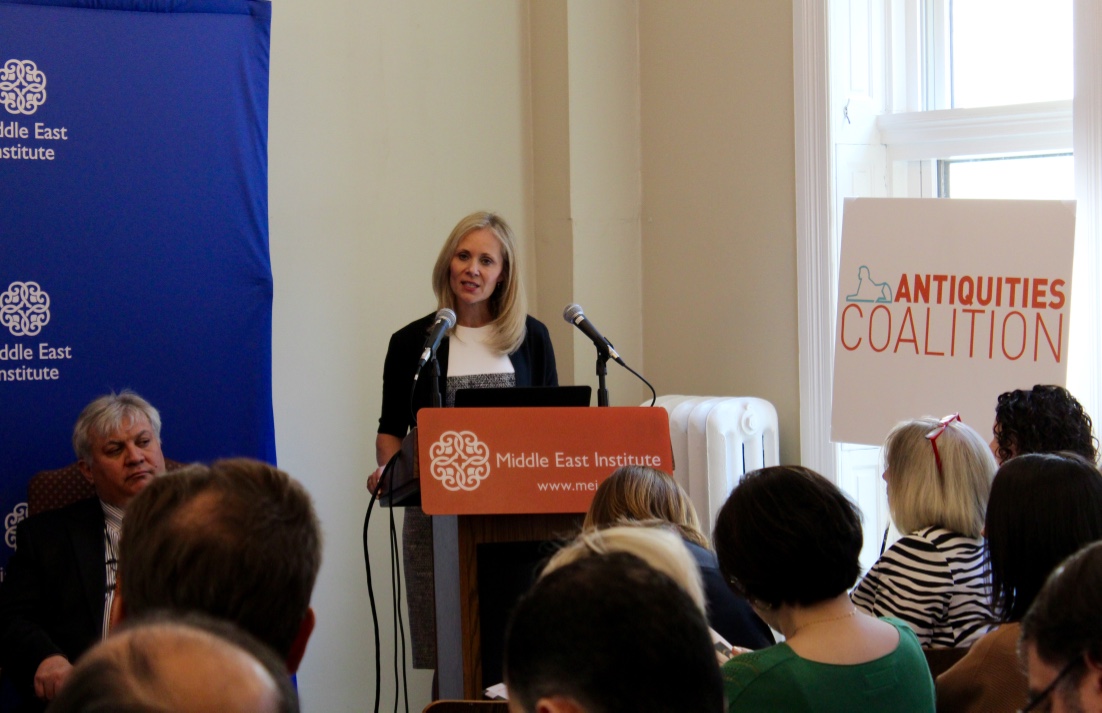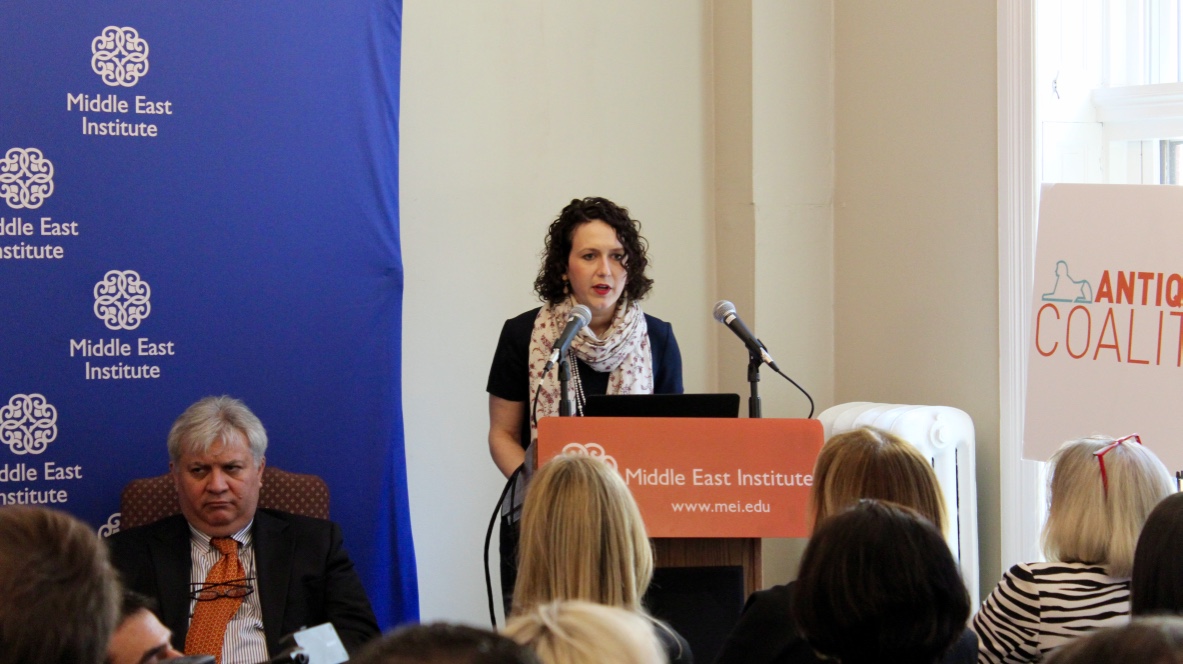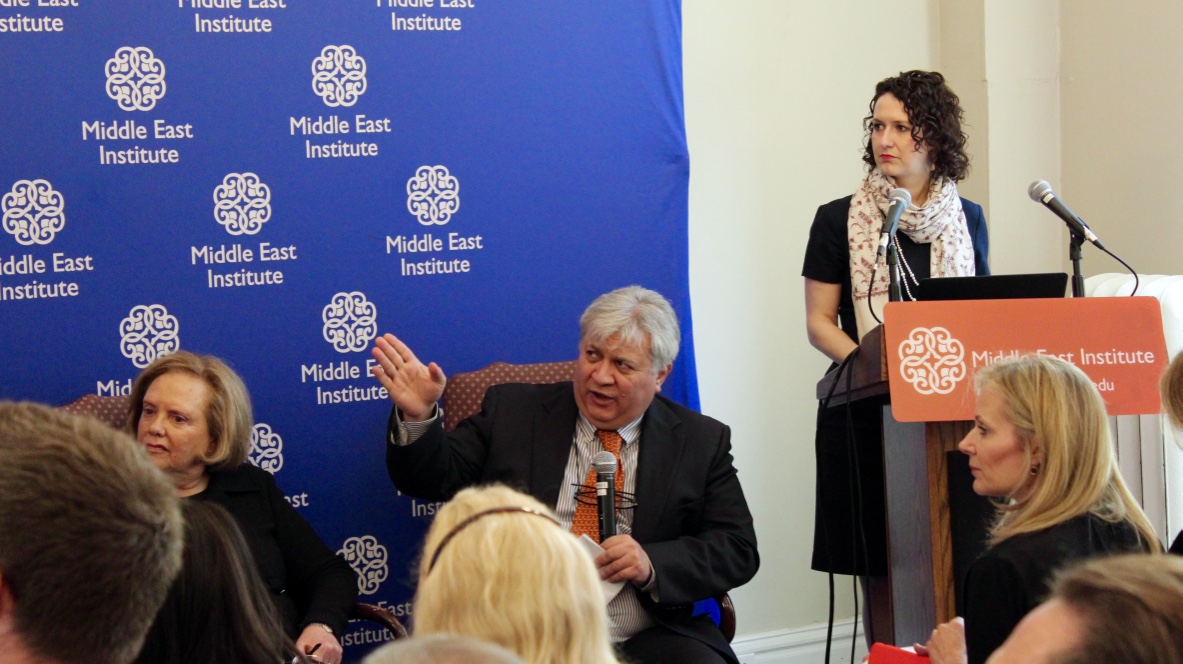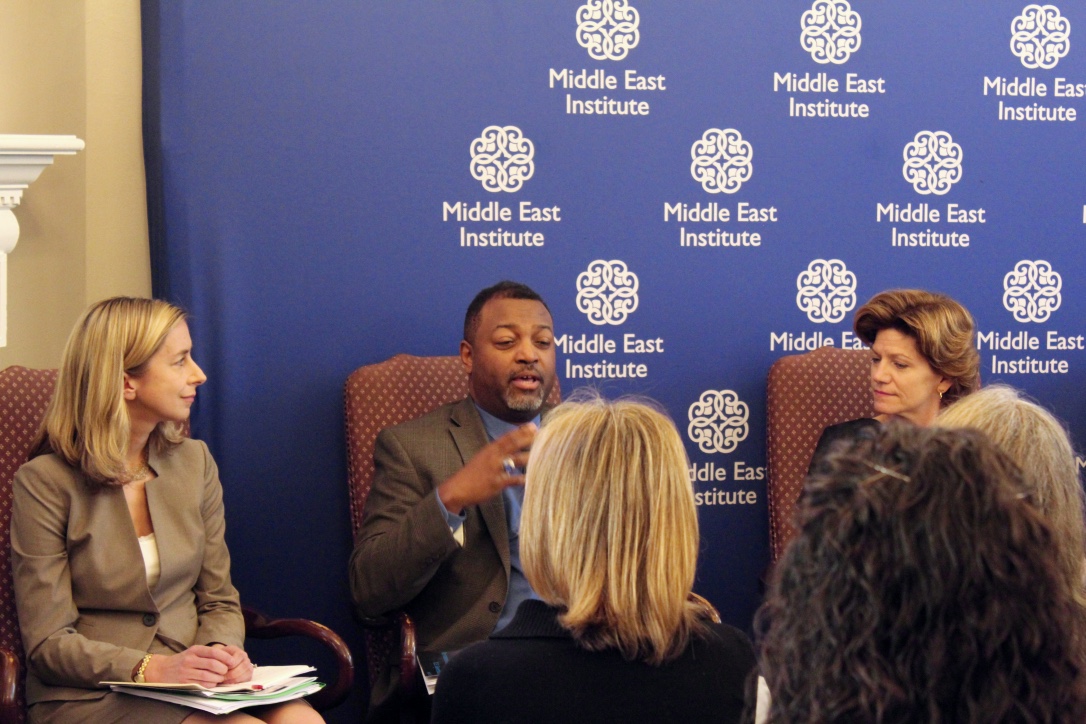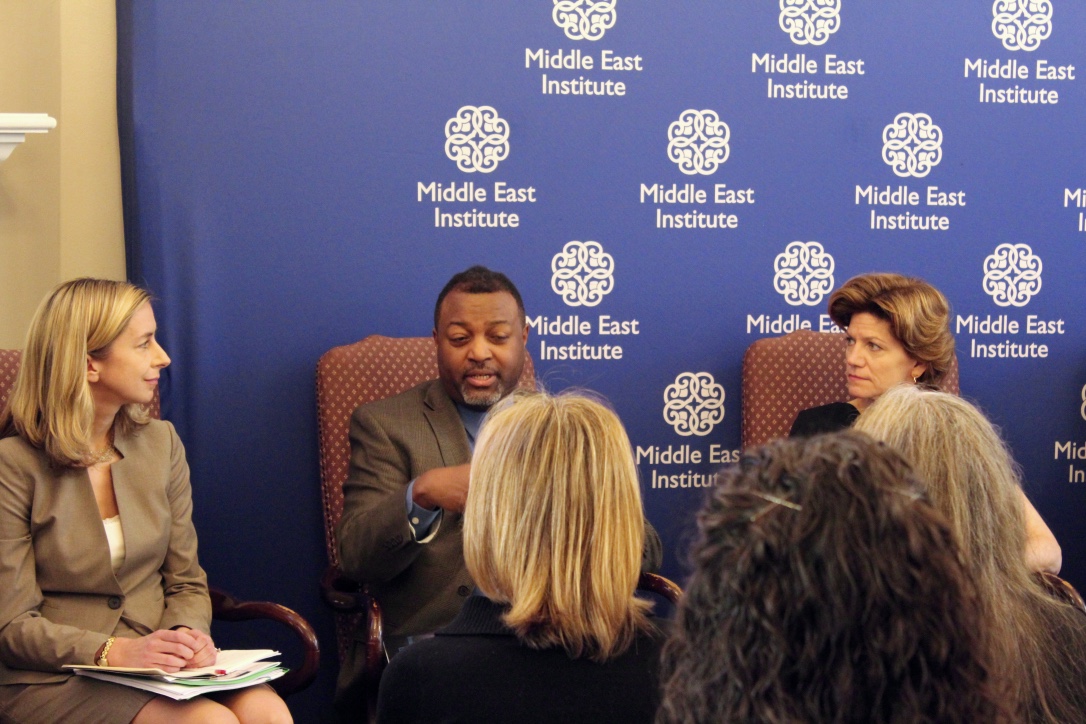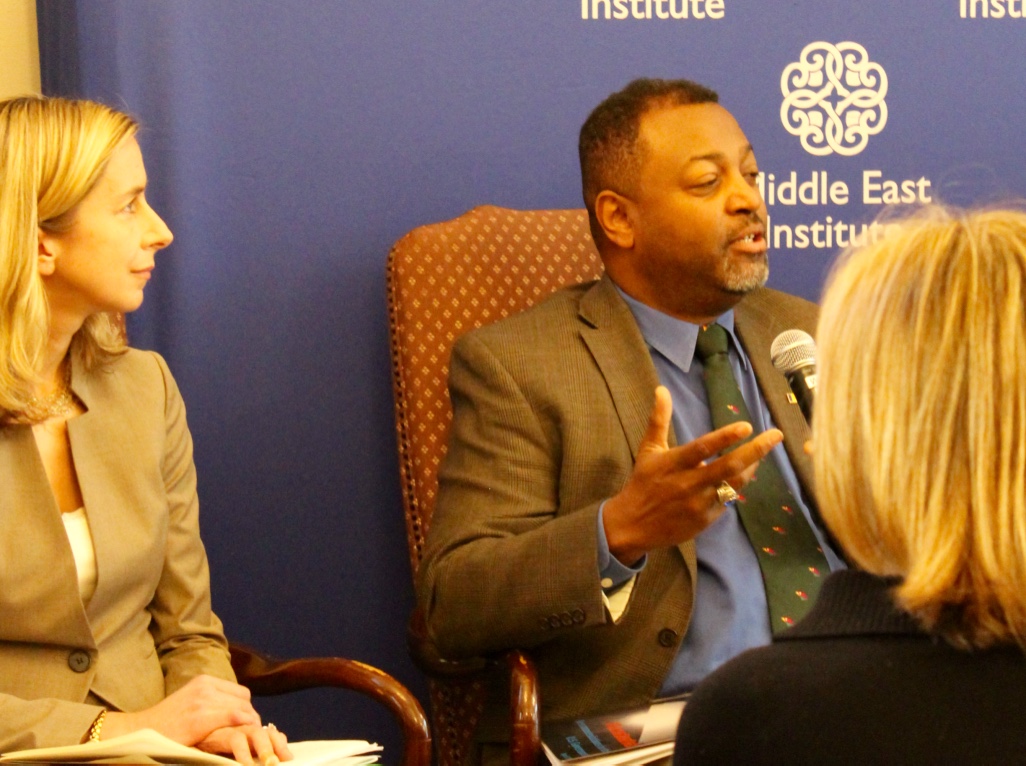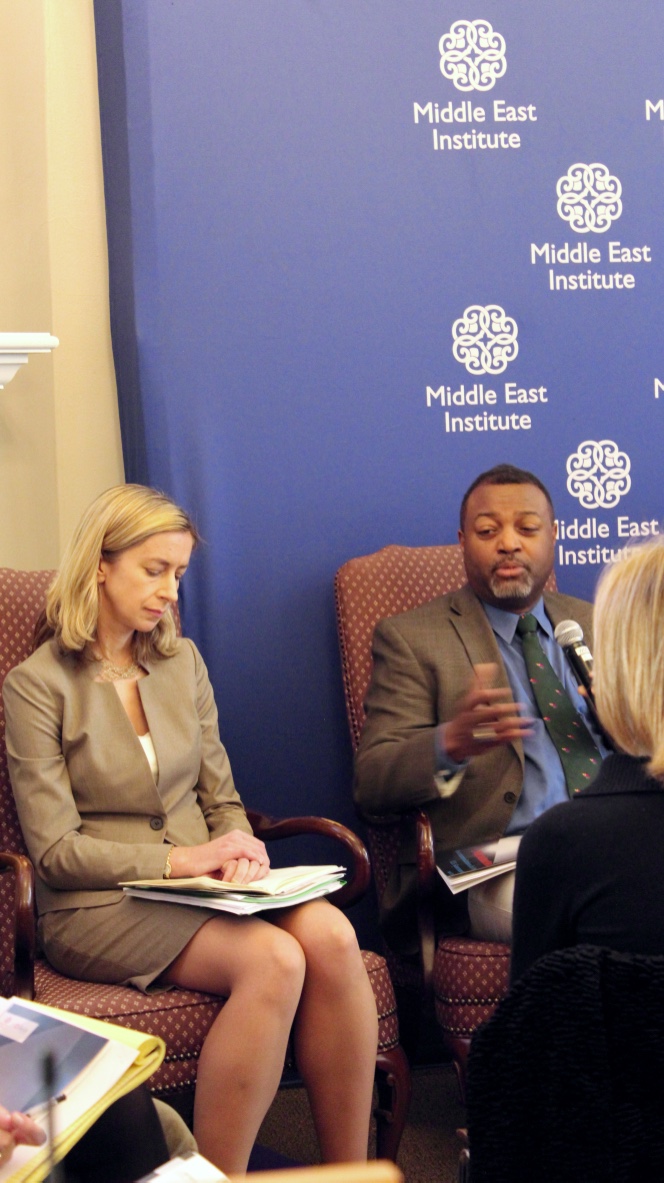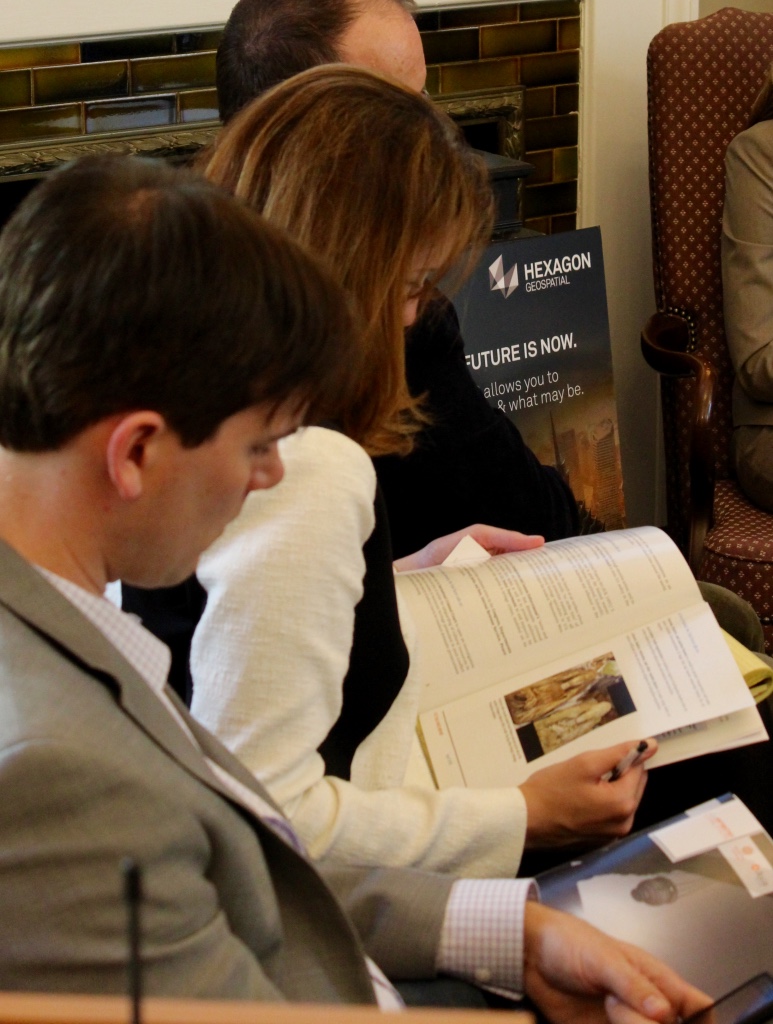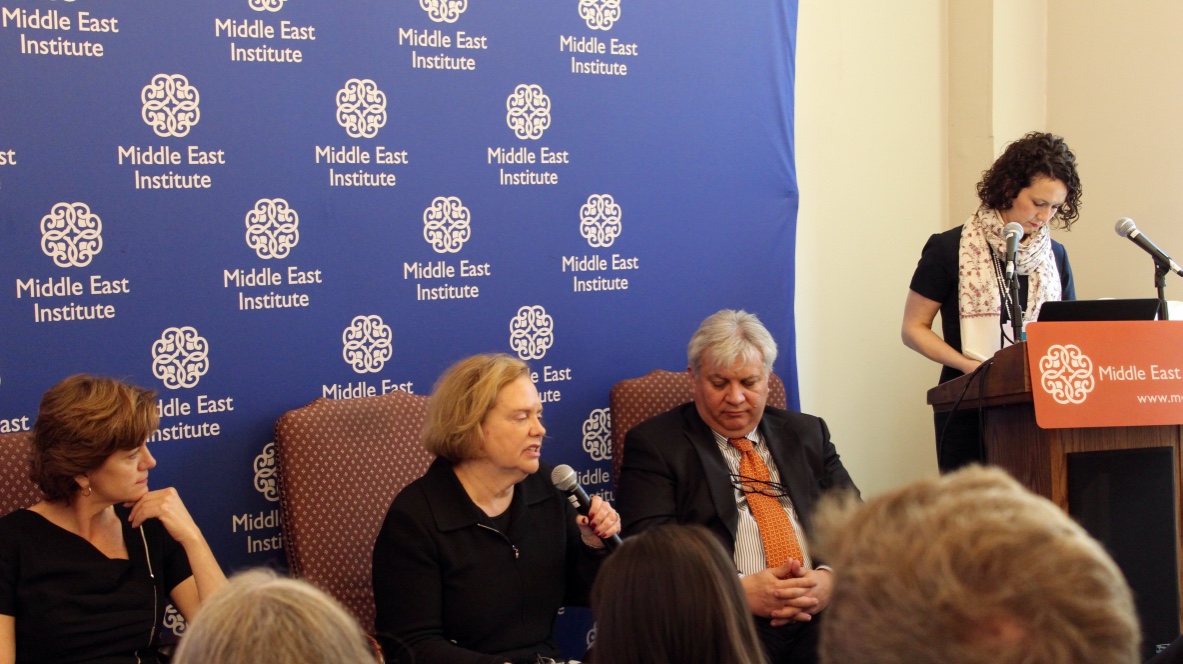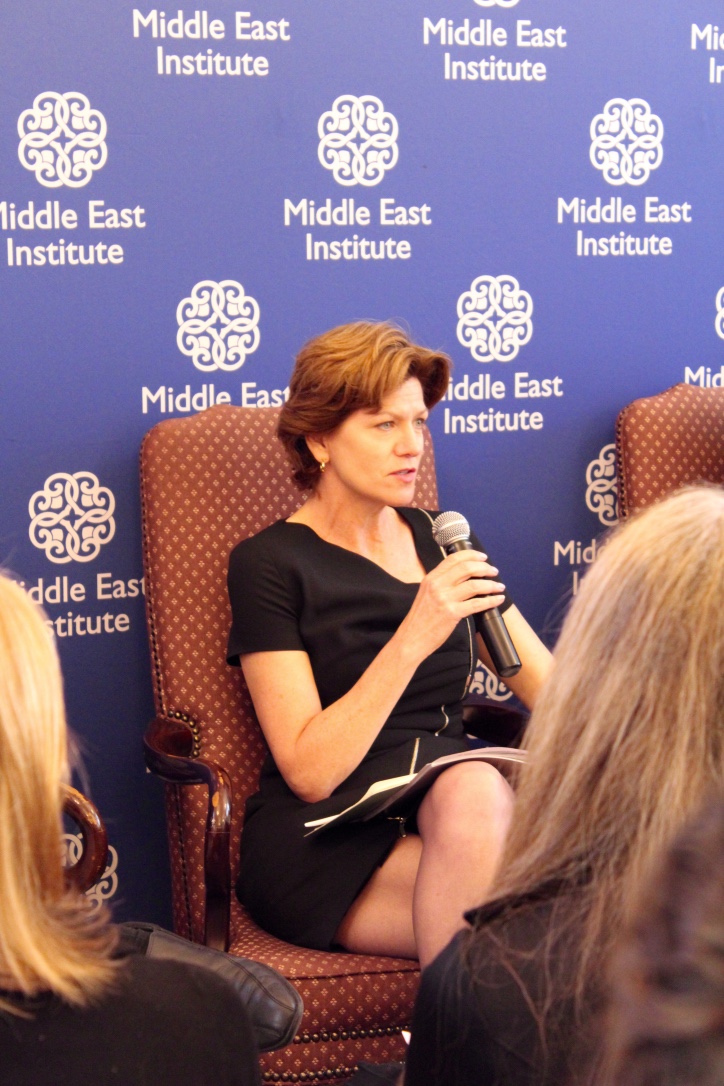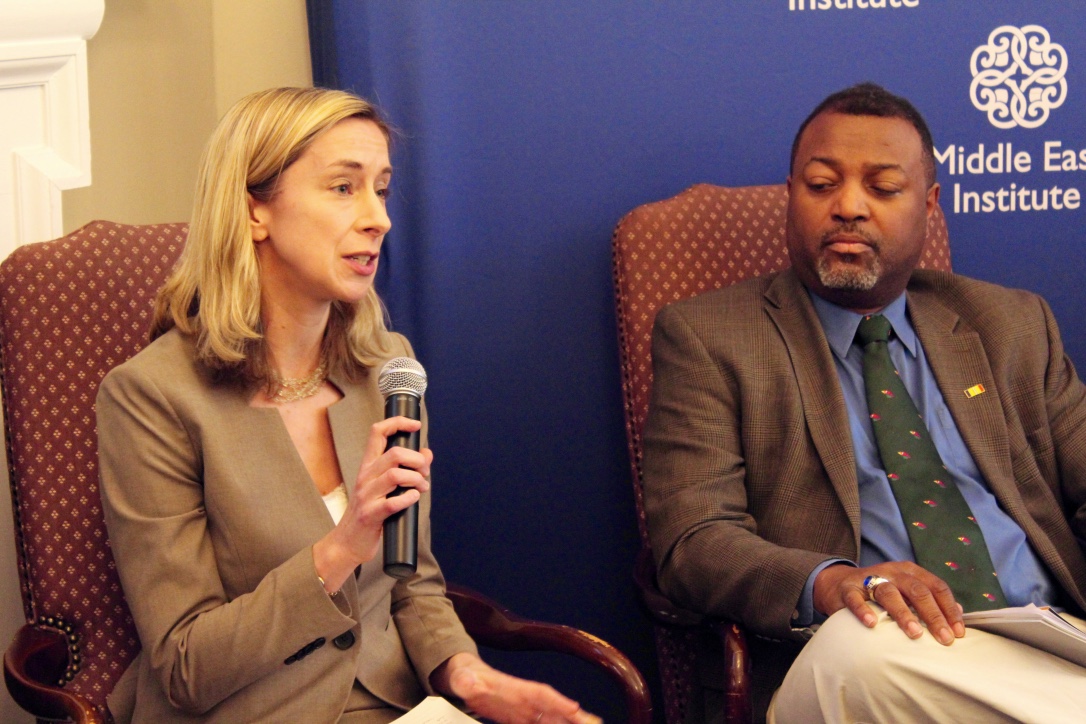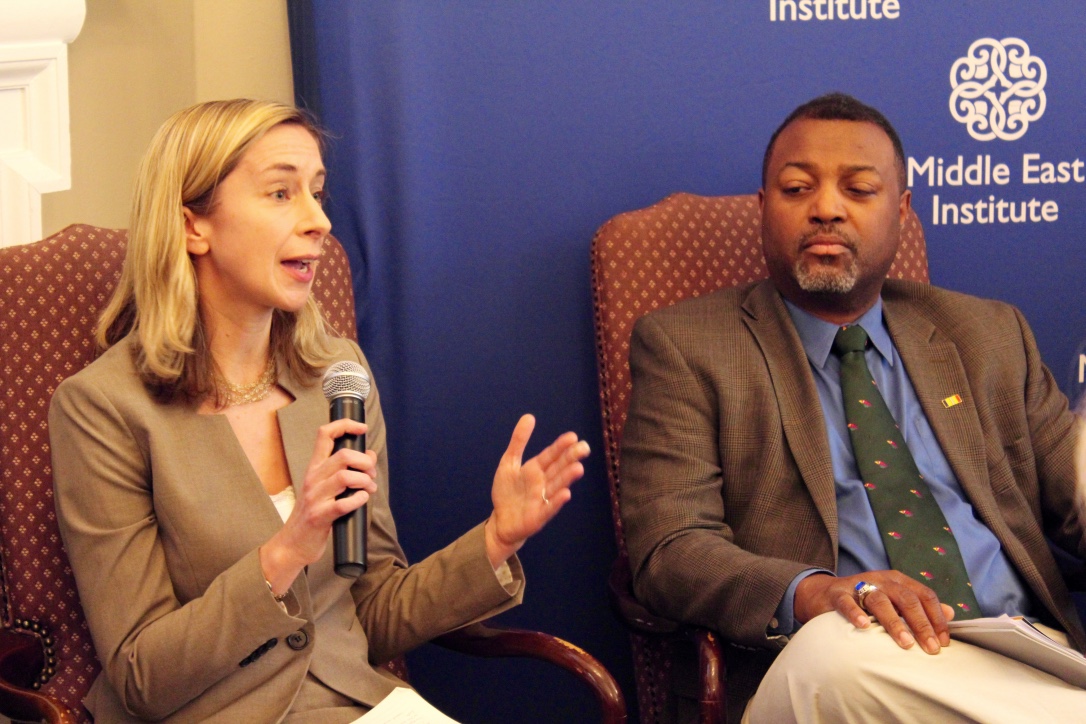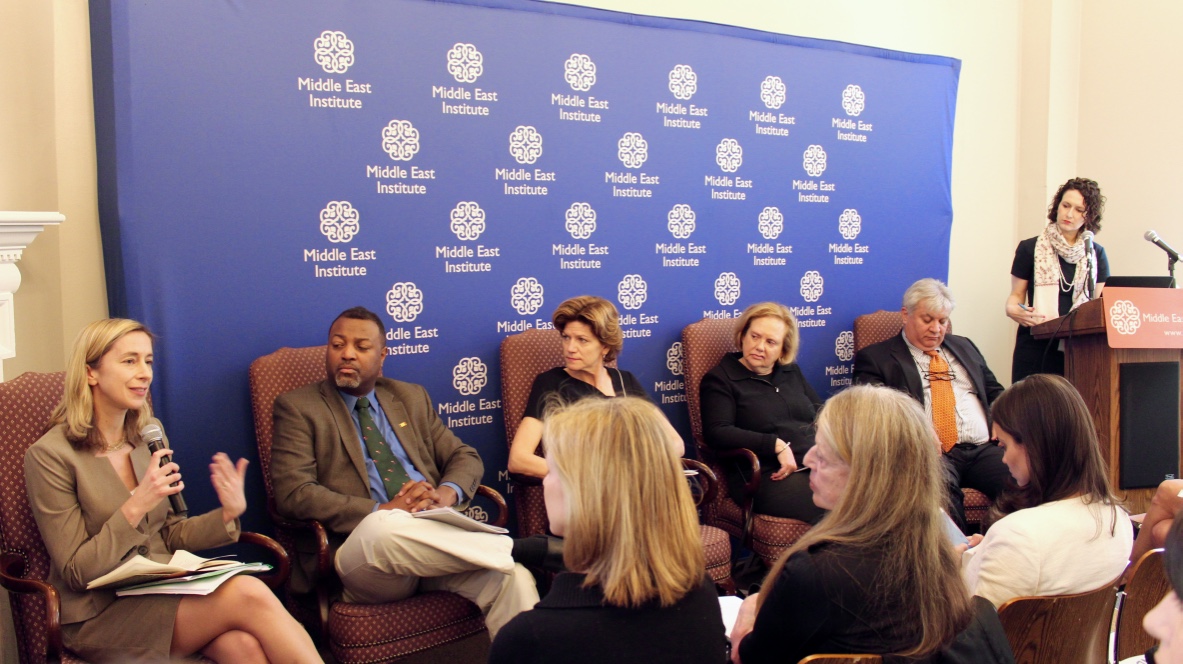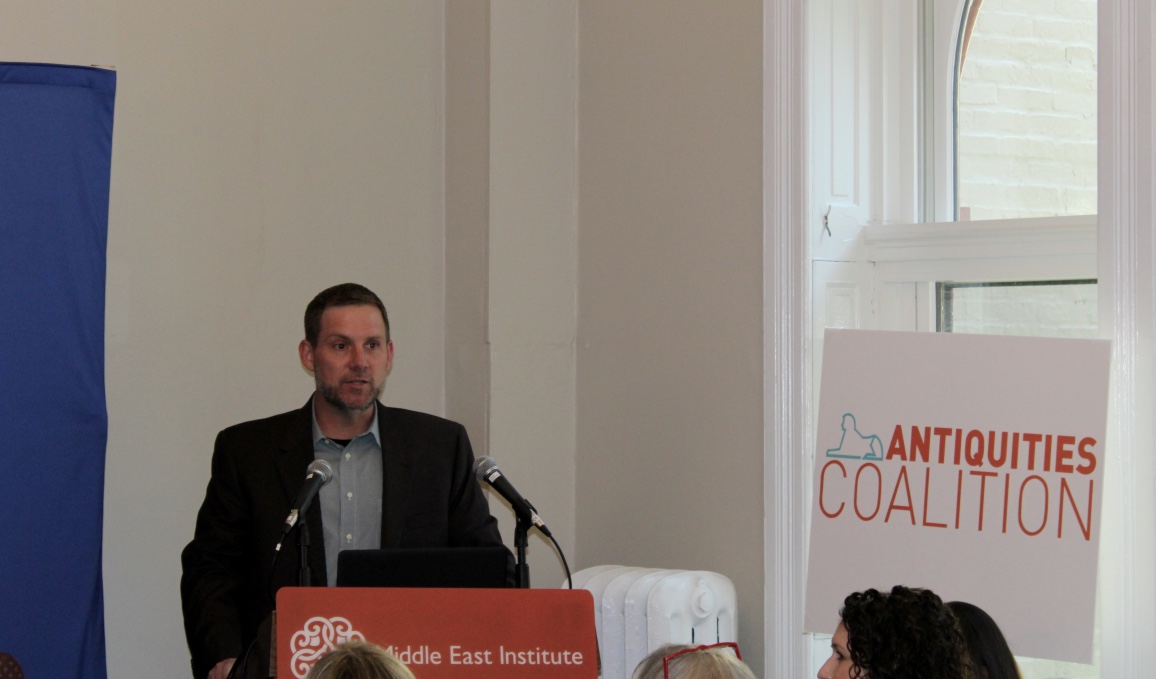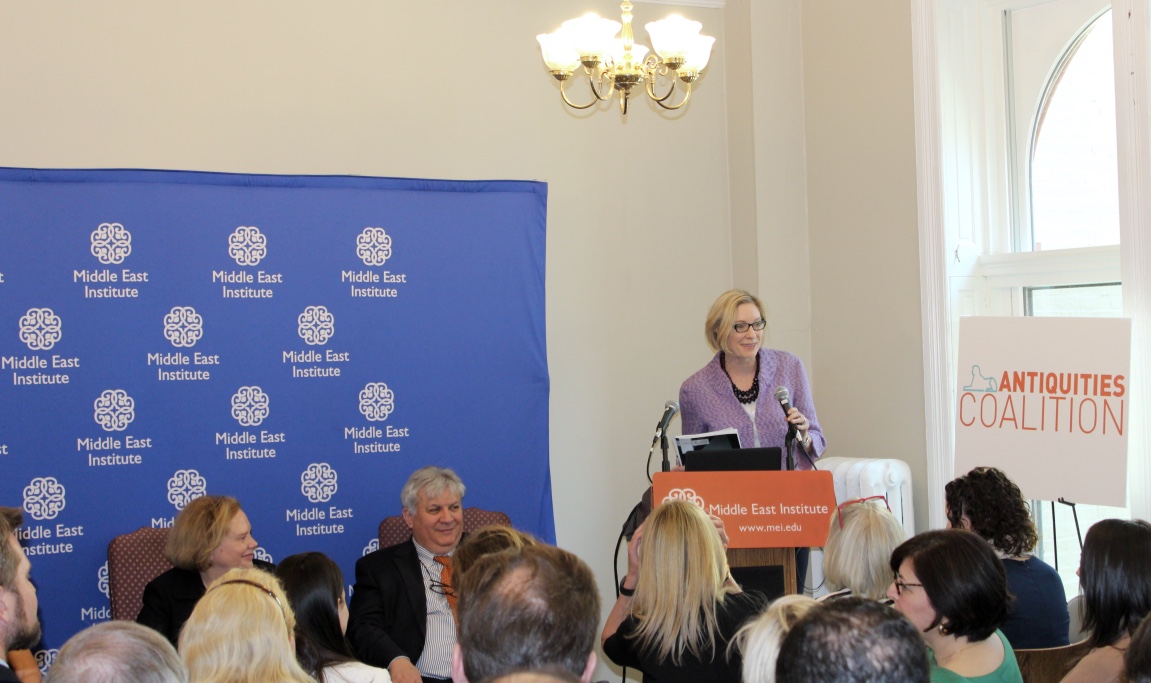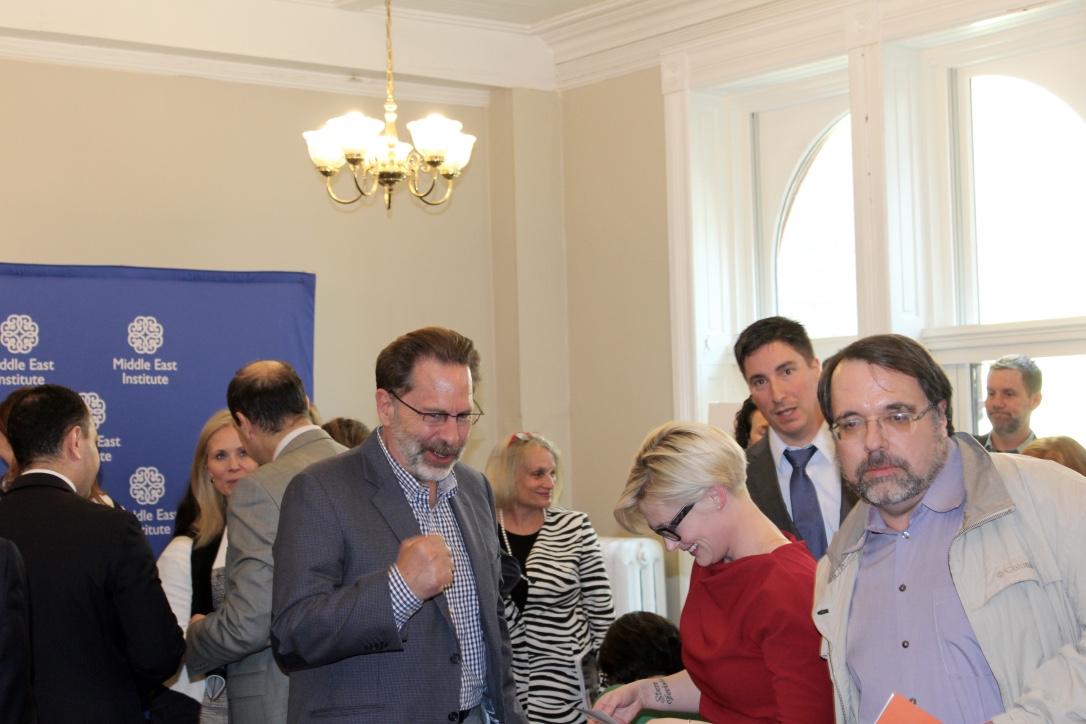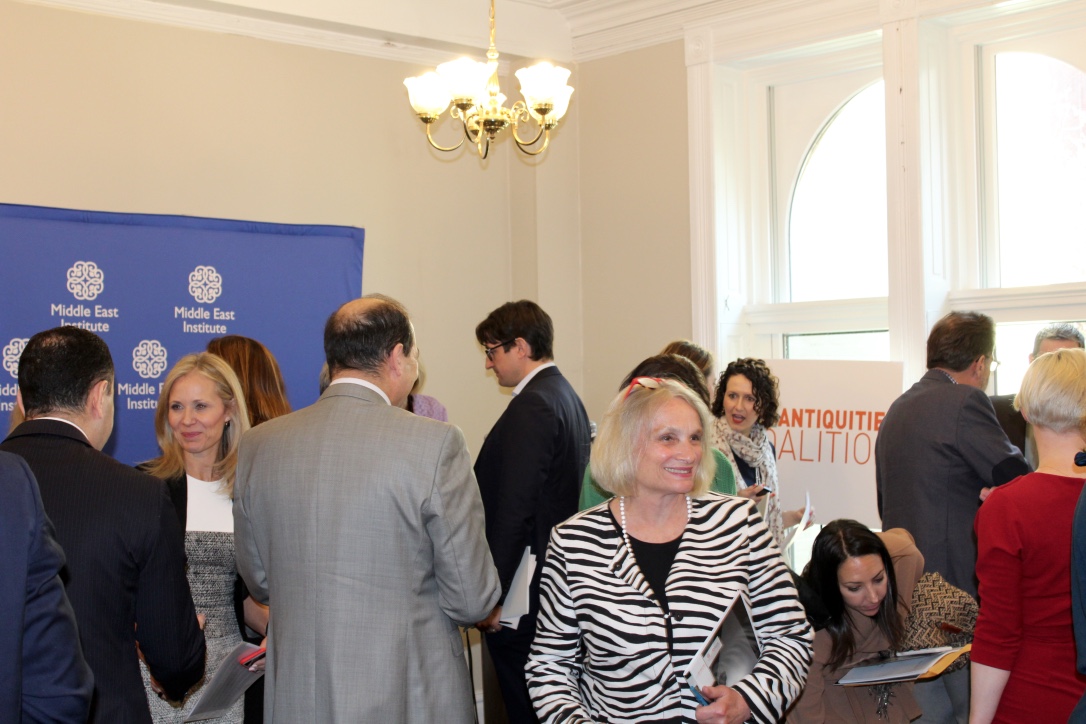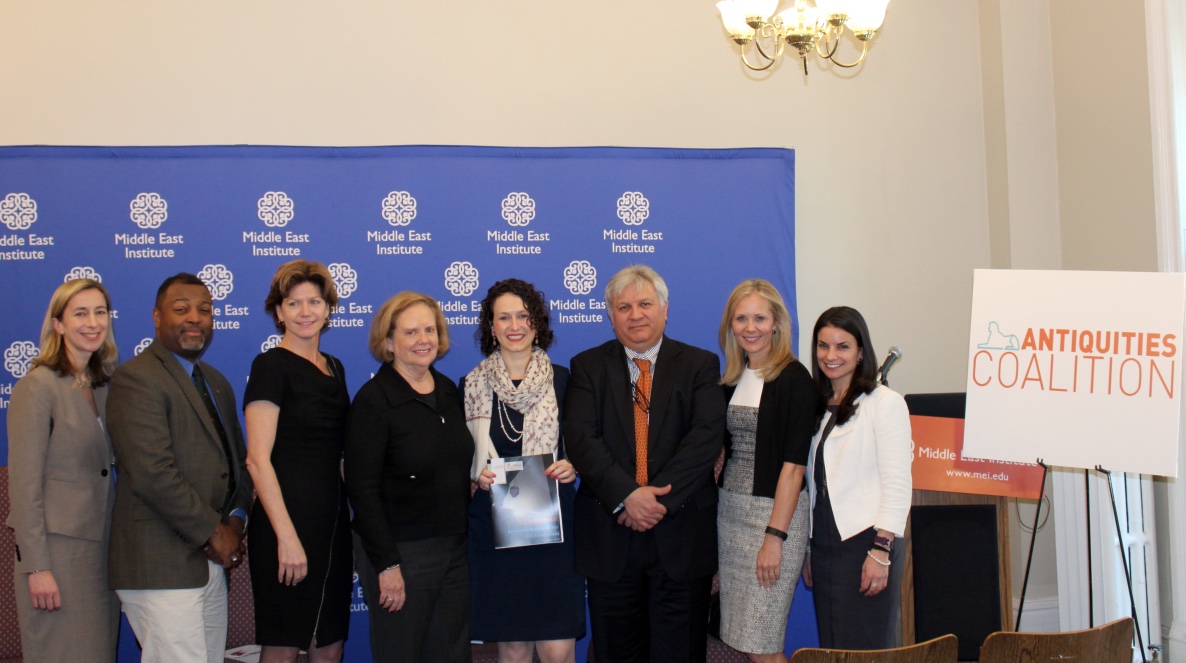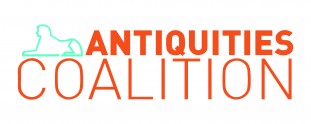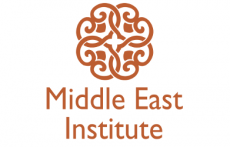Since the Arab Spring, in the Middle East and North Africa (MENA), culture has become a weapon of war and a terrorist financing tool for violent extremist organizations.
The Antiquities Coalition, Asia Society, and Middle East Institute convened the #CultureUnderThreat Task Force to counter these threats to our world heritage and national security. The Task Force brings together leaders from the heritage, law enforcement, legal, military, and security communities. This is the first time such a diverse group of experts has come together to develop such a comprehensive range of solutions.
Our joint task force report—#CultureUnderThreat: Recommendations for the U.S. Government—details the current situation and puts forward 31 specific
recommendations to address the ongoing crisis. It calls for new policies, practices, and priorities for the United States to implement, both on its own and in conjunction with the international community and private sector. These include steps that can be taken by the Obama Administration, Congress, United Nations, and the art market.
We hope that the United States government will view these recommendations as an opportunity to extend its leadership in the prevention of cultural crimes around the world.
BACKGROUND
The heritage of the Middle East and North Africa is under attack. Terrorist organizations like Daesh (also known as ISIL or ISIS) are destroying history to erase cultural identity, while looting and trafficking antiquities to arm their cause. This organized plunder and targeted destruction is first and foremost a threat to the people of the region, as well as to millions of archaeological, historic, and sacred sites, and the very “Cradle of Civilization.”
Daesh has razed entire temples at the ruins of Palmyra in Syria and Nimrud in Iraq, dynamited the Judeo-Christian Tomb of Jonah and the Sunni mosque of the Prophet Yunnis, pillaged the Mosul Museum, and obliterated countless Shiite and Sufi places of worship. But Daesh is not alone: from Egypt to Libya to Yemen, cultural crimes have proliferated in the vacuum of political instability and breakdown of security following the 2011 Arab Spring. These attacks are funding conflict and crime, creating long lasting economic damage, and undermining future peace. They are war crimes and a warning sign of impending genocide.
We need coordinated, targeted, and urgent action.
THE TASK FORCE
The #CultureUnderThreat Task Force was convened by the Antiquities Coalition, Asia Society, and Middle East Institute to explore solutions to this growing crisis and serve as an ongoing resource to policy makers. The Task Force builds upon the 2015 Cairo Conference, where ministers from ten key MENA countries agreed to take steps against cultural racketeering. Their collective action plan—the Cairo Declaration—was reinforced by the #CultureUnderThreat Forum held on the margins of the United Nations General Assembly in September 2015.
The recommendations that follow begin with actions that the Task Force believes the United States government can and must take to end cultural crimes. They are also intended to serve as a guide for leaders across the international community and in the private sector. It is important to recognize that the success of these recommendations will depend on adequate funding being made available, not only for implementation, but for additional research to help us better understand the illicit trade in antiquities.
Ending the cultural crisis in the Middle East and North Africa is a national security and human rights imperative. Adoption of these recommendations would go far in addressing this crisis. The Task Force stands ready to assist in this effort.
Full Report Available Recommendations Executive Summary
for Download Here Overview Here Here
RECOMMENDATIONS OVERVIEW
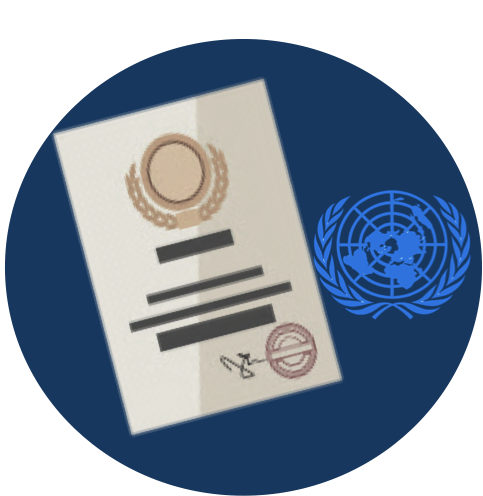
The United States should immediately and fully implement United Nations Security Council Resolutions 2199 and 2253 to cut off terrorist financing from antiquities trafficking.

The National Security Council (NSC) should allocate staffing resources to track antiquities trafficking and its links to terrorist financing and organized crime.

The President should prohibit the import of illicit antiquities through Executive Order, as a means to cut off key sources of terrorist financing.

The President should use his powers as Commander in Chief to instruct the Secretary of Defense and the Joint Chiefs of Staff to prioritize the protection of cultural property in military operations.

The United States Congress should expeditiously pass the Protect and Preserve International Cultural Property Act (H.R. 1493/ S. 1887).

The House of Representatives and Senate Committees on Appropriations should approve a limited waiver allowing the United States to regain its vote in the United Nations Educational, Scientific, and Cultural Organization (UNESCO).

The Department of Defense should support the United States Committee of the Blue Shield’s continuing work to create “no strike lists” of cultural heritage sites that should not be targeted during armed conflict.

U.S. armed forces and their coalition partners should engage in military air strikes, as appropriate, against targets threatening known heritage sites as part of their comprehensive mission to defeat violent extremism.

The Department of Defense should conduct a full review and report on the status of the Arts, Monuments, and Archives section—the modern day incarnation of the “Monuments Men”—in light of the heritage crisis in the Middle East.

Training for civil affairs—for both active duty and reservists—should provide a general background in cultural property protection (CPP). Additionally, training for Special Operations Forces (SOF) should be expanded to provide a basic knowledge of antiquities trafficking.

The armed forces, through the Manpower and Personnel Directorate (J-1), should maintain a roster of active duty personnel with a demonstrated expertise in heritage-related fields, who can be quickly identified, tasked, and deployed to protect cultural property.

The Department of Defense should review the 1954 Hague Convention’s Second Protocol with the ultimate goal of ratification.

The Department of Defense (DOD) should expand its cultural resources program, which protects heritage sites on DOD properties, internationally to to help U.S. forces better protect cultural property when deployed overseas.

U.S. law enforcement should shift its focus from seizure and repatriation of antiquities to the dismantling of criminal networks through criminal prosecution.

The Department of Justice (DOJ) should appoint designated prosecutors to bring criminal cases against individuals and organizations involved in the illicit antiquities trade.

The State Department should educate foreign nations about proactive steps that can be taken to restrict the import of their illegally exported cultural property into the U.S., including through the use of bilateral agreements under the Convention on Cultural Property Implementation Act.

The Department of Homeland Security, or another relevant agency, should restrict the import and export of cultural property to designated ports, in order to more effectively and efficiently control the antiquities trade.

The Internal Revenue Service should require proof of legal title and known ownership history before granting tax deductions for art and antiquities.

U.S. Customs and Border Protection (CBP) should work with the World Customs Organization (WCO) to join and further develop ARCHEO, a web based application that allows real time communication between government authorities and international experts to prevent antiquities trafficking.

The Peace Corps should create a program sector for cultural preservation.
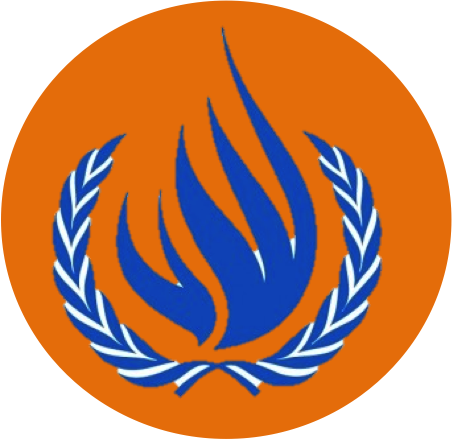
In recognition that crimes against culture are human rights violations, the Office of the United Nations High Commissioner for Human Rights (OHCHR) and the Special Rapporteur in the Field of Cultural Rights should develop responses to cultural cleansing and racketeering.

The United Nations Department for Peacekeeping Operations (DPKO) and other intergovernmental organizations, such as the North Atlantic Treaty Organization (NATO), should include the safeguarding of cultural resources in their peacekeeping training and mandates.

The United Nations should incorporate heritage protection and reconstruction—as well as legal actions to prosecute crimes against culture—into its post-conflict planning.

The United Nations Security Council (UNSC) should refer the crisis in Iraq and Syria to the International Criminal Court (ICC), allowing the Prosecutor to open an investigation into cultural heritage crimes and other violations of international law.
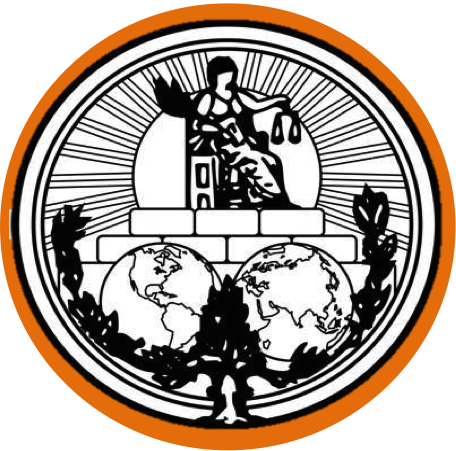
UNESCO should request that the International Court of Justice (ICJ) issue an advisory opinion on the nature of war crimes committed through the destruction of cultural property in the current conflicts in the Middle East and North Africa.

The United Nations should encourage and support national prosecutions of cultural racketeering and cultural cleansing by domestic legal systems through the Department of Peacekeeping Operations (DPKO)’s Rule of Law Program.

Art market players should pledge to be fully transparent in their dealings, making publicly available documentation of legal title and known ownership history for all antiquities.

Museums that receive public funding should adopt a disclosure policy that follows the intent of the Freedom of Information Act (FOIA).

A relevant professional organization should establish a registry of antiquities dealers who are verified to abide by prescribed ethical codes and industry best practices.

Because incidents of looting most often remain undiscovered until the objects surface on the market, and thus no records of their theft exist, we call upon stolen art databases to cease certifying antiquities.
The #CultureUnderThreat Task Force members have reached a consensus around the general report and its policy recommendations, although each member does not necessarily endorse every finding and conclusion. Each has participated in their individual capacities and not as representatives of their institutions.
CHAIRS
Amb. Wendy Chamberlin
President
Middle East Institute
Deborah M. Lehr
Chair & Founder
Antiquities Coalition
Josette Sheeran
President & CEO
Asia Society
PROJECT DIRECTOR
PROJECT STAFF
Tess Davis
Antiquities Coalition
Katie A. Paul
Antiquities Coalition
MEMBERS
Amr Al-Azm
Shawnee State University
Jan C.K. Anderson
U.S. National Committee of ICOMOS
Ann Benbow
Archaeological Institute of America (AIA)
Neil Brodie
University of Oxford
Kate Burmon
Northeastern University
Bonnie Burnham
World Monuments Fund (Emerita)
Allison Cuneo
American Schools of Oriental Research (ASOR) Cultural Heritage Initiatives
Emma Cunliffe
University of Oxford
Michael Danti
American Schools of Oriental Research (ASOR) Cultural Heritage Initiatives
Ricardo Elia
Boston University
Marc Elliott
Monterey Terrorism Research and Education Program (MonTREP)
Michelle D’Ippolito Fabiani
University of Maryland, Criminology Department
Yaya J. Fanusie
Center on Sanctions and Illicit Finance
Foundation for Defense of Democracies
Jason Felch
ChasingAphrodite.com
Fusion GPS
Anita Canovas Forjette
Attorney at Law
Patty Gerstenblith
DePaul University College of Law
David Grantham
National Center for Policy Analysis
Peter Herdrich
Antiquities Coalition
Barbara T. Hoffman
The Hoffman Law Firm
Brigadier General (Ret.) Russell D. Howard
Monterey Terrorism Research and Education Program (MonTREP)
Tommy Livoti
Army Reserve
Colette Loll
Art Fraud Insights
Elizabeth Madigan Jost
Morgan Stanley
Shana Mansbach
Inside Revolution
Tom Nagorski
Asia Society
Malcolm W. Nance
Terror Asymmetrics Project (TAPSTRI)
Kelly Moore
Conflict and National Security Consultant
Nicole Payntar
University of Texas, Austin
Ariel Ratner
Inside Revolution
Victoria Reed
Museum of Fine Art, Boston
C. Brian Rose
University of Pennsylvania
Lawrence Rothfield
“The Past for Sale” initiative, University of Chicago
Kate Seelye
Middle East Institute
Andrew G. Vaughn
American Schools of Oriental Research (ASOR)
Corine Wegener
Smithsonian Institution
ABOUT THE SMART M.APP
To provide a graphical representation of cultural crimes committed by Daesh (also known as ISIS or ISIL ) and other extremist organizations in the Middle East and North African region, the Antiquities Coalition partnered with Hexagon to create the Culture Under Threat Map. The interactive map program base includes current high-resolution satellite imagery maps and displays the destruction of heritage sites in the Middle East and North Africa. The Smart M.App’s satellite imagery base paired with the metrics for viewing multiple data combinations provides unique insights into cultural cleansing that were not previously available through standard GIS maps.
The Culture Under Threat Smart M.App temporally illustrates losses to date with
easy to use time and date slide bars showing when incidents took place. Unlike previous maps that show a static time set, the Culture Under Threat Smart M.App timeline can be used to understand how destruction has evolved across the broader MENA region at a given time. The ability to view this timeline with any combination of data sets allows for a unique examination of patterns. This allows experts to not only quantify data across a wide region, but provides an opportunity to understand the types of patterns that are occurring which can better inform them in the development of solutions to the critical threats caused by cultural cleansing.
MAP USE INSTRUCTIONS
- This map is interactive and user friendly, it is designed to be explored and clicked throughout and can be accessed using all browsers, computers, tablets and smart phones.
- To zoom, click the “+” or “-” buttons on the map – zooming will spread the numbered icons as the map gets more detailed.
- Zooming in to full depth will reveal the latest available Digital Globe satellite imagery in any given area.
- To see more information about each site marked, click on the icon of your choice to see the pop-up of information.
- To see charts with data by type – click on the 3 bar icon to the right and select “Charts”, this will give options to view a pie chart with groups responsible for destruction as well as the option to view timeline.
- For the timeline, select a span of time to view incidents by date of occurrence.
- For the suspected group pie chart, click on any group in the chart to view incidents by selected group responsible.
- Metrics for both the suspected group chart and the timeline can be viewed in any combination to see the metrics available.
- Click around and explore!

